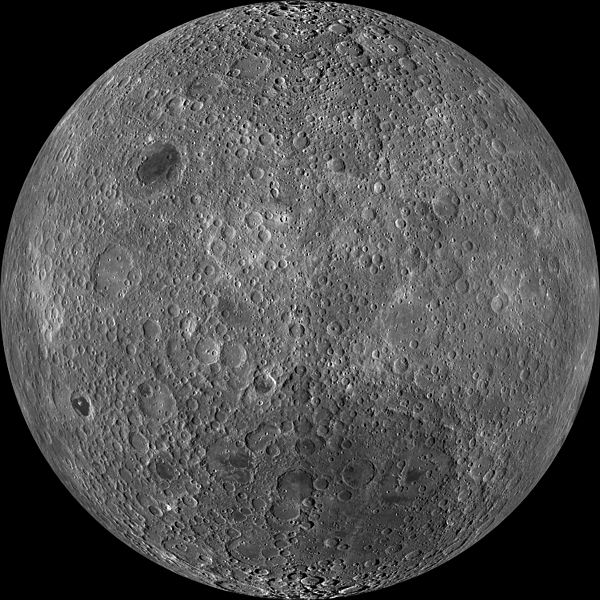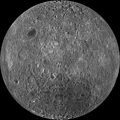Файл:Moon Farside LRO.jpg

Барам хьажале: 600 × 600 пиксель. Кхин шоралла: 240 × 240 пиксель | 480 × 480 пиксель | 768 × 768 пиксель | 1024 × 1024 пиксель | 2048 × 2048 пиксель | 18 000 × 18 000 пиксель.
Оригиналан файл (18 000 × 18 000 пиксель, файлан барам: 85,34 Мб, MIME-тайп: image/jpeg)
Файлан истори
Тlетаlаде терахь/хан, муха хилла хьажарна и файл.
| Терахь/Хан | Жима | Файлан барам | Декъашхо | Билгалдаккхар | |
|---|---|---|---|---|---|
| карара | 2014, 19 март, 23:47 |  | 18 000 × 18 000 (85,34 Мб) | Huntster | High resolution mosaic. |
| 2011, 9 апрель, 04:12 |  | 1600 × 1600 (1,44 Мб) | Bubba73 | {{Information |Description ={{en|1=Far side of the Moon, by NASA's Lunar Recon. Orbiter}} |Source =http://apod.nasa.gov/apod/image/1104/farside_lro1600.jpg |Author =NASA - LRO |Date =2011? |Permission = |other_versions = } |
Файл лелор
ХӀара файл агӀонашкахь лелош йац.
Глобалан файл лелор
ХӀара файл лелош йу лахахь гайтина йолу википедеш чохь:
- Лелор af.wikipedia.org
- Лелор az.wikipedia.org
- Лелор be.wikipedia.org
- Лелор bjn.wikipedia.org
- Лелор bn.wikipedia.org
- Лелор bs.wikipedia.org
- Лелор ca.wikipedia.org
- Лелор cs.wikipedia.org
- Лелор de.wikipedia.org
- Лелор en.wikipedia.org
- Лелор en.wikibooks.org
- Лелор en.wikiversity.org
- Solar System, technical/Moon
- User:Marshallsumter/Radiation astronomy2/Visuals
- Draft:Original research/Planets
- User:Marshallsumter/Radiation astronomy2/Visuals/Quiz
- User:Marshallsumter/Rocks/Rocky objects/Astronomy
- User:Marshallsumter/Radiation astronomy/Courses/Principles/Hourly 2
- User:Marshallsumter/Radiation astronomy/Courses/Principles/Midterm quiz
- User:Marshallsumter/Radiation astronomy/Courses/Principles/Final quiz
- Titan/Quiz
- User:Marshallsumter/Rocks/Rocky objects
- Draft:Enceladus/Quiz
- Moon/Quiz
- Stars/Sun/Heliology/Quiz
- Earth/Quiz
- Stars/Reds/Quiz
- Draft:Dione/Quiz
- User:Marshallsumter/Radiation astronomy2/Scattered disks/Quiz
- User:Marshallsumter/Radiation astronomy1/Kuiper belts/Quiz
- Liquids/Liquid objects/Moon
- User:Marshallsumter/Radiation astronomy/Craters
- Лелор es.wikipedia.org
- Лелор et.wikipedia.org
Хьажа хӀара файл глобалан лелор.


